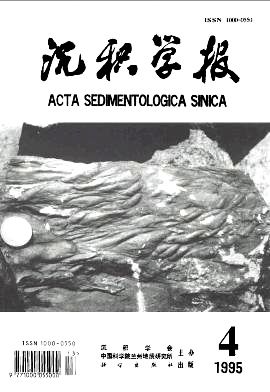The Revolution of the Isotopic Composition of Strontium in the Permian Paleo-ocean in South China
- Received Date: 1994-02-10
- Publish Date: 1995-12-10
-
Key words:
- Permian period /
- Paleo-ocean /
- Strontium isotope
Abstract: It is well known that the strontium isotope is very useful not only for studying sedimentary history of palaeo-ocean but also for stratigraphic classification. So it is very important to research the geochemistry of strontium isotope. The paper, taking the Mouyang profile in Guizhou for example and through the analyses of the isotopic composition in marine carbonate,discusses in detail the evolution of strontium isotope and its geological significance. The results show the following facts:1. In general, the change of the isotopic composition of strontium in marine carbonate is between 0. 70722 and 0. 70767 from the begining to the end of the Permian period. 2. The change scale of the strontium isotope is similar to the results determined by B. N.Popp; And its evolution trend is very similar to the outcome published by W. H. Burk and B.N. Popp.3. The change of isotopic composition of strontium is controlled by the source of strontium, such as volcanic rock, crust silicate and old marine carbonate. From the study area, it is known that the change of 87Sr/86Sr ratio is related to sea level change, and there is a negtive conrelation between the 87Sr/86Sr ratio and sea level change.
| Citation: | Tian Jingchun, Zheng Yunfu. The Revolution of the Isotopic Composition of Strontium in the Permian Paleo-ocean in South China[J]. Acta Sedimentologica Sinica, 1995, 13(4): 125-130. |






 DownLoad:
DownLoad: